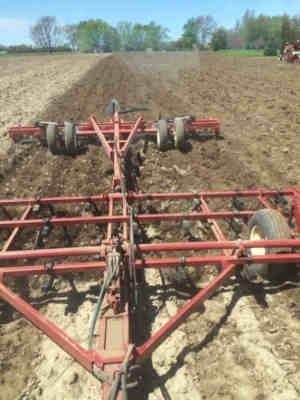By Martin Mangual
What are the important questions you need to discuss as the growing season begins?

As fieldwork begins, think about how you are approaching your planning process for your crops this season.
As field work begins in Michigan many dairy farmers in the state shift into feed producing gear. Often, many resources and silage discussions occur in late summer or early fall; however, the path to great quality corn silage should begin long before harvest. It begins in the spring with good planning. What are the important questions you need to discuss with your agronomist and dairy nutritionist? What are the areas that need to take focus at this stage of the season?
Where are your inventories?
Inventories should always be in the mind of producers. This becomes especially true when planning a new crop. Understanding your inventories and how last season’s crop yielded and fed out are key as you project this season’s yield or needed acreage. Michigan State University Extension recommends establishing a forage budget for your farm and keeping it updated throughout the year. On this type of budget, you will track your inventories and the amounts you have allocated to feeding groups based on ration, estimated intake and group size. This can then be used as one of the center pieces of information as we project how much crop we need to feed the herd in the upcoming season. Maintaining updated inventories can also help to provide another valuable piece of information. We can also use it to determine the percent of shrink that occurs on the farm. This also needs to be considered as we plan the year’s planting strategy.
Inventory analysis and forage budgets should also consider any anticipated number of cattle to feed in the coming year and sufficient carryover to allow new crop silage to ferment 3 to 4 months before feeding it.
What are the expectations from weather models?
Predicting the future is always challenging but weather data and models can provide long-term predictions to help your planning. Evaluate the season’s projections and use it to plan what type of crops can perform under the projected circumstances. For example, if a dry season is projected, should you evaluate if sorghum or other type of crop can also be planted to help you mitigate some of the reduced yield of corn due to drought? The Virtual Breakfast from the MSU Extension field crop team is a weekly seminar that provides valuable crop information and up-to-date weather forecast and projections.
What is the state of your soils?
Soil testing should never be overlooked and MSU Extension recommends it be done every 3 to 4 years. Sampling can be done using a zone method based on soil textures, or a more detailed grid sampling method. Each method can provide a picture of current soil fertility, so nutrients are neither under- or over-supplied leading to possible leaching of nutrients, reduced yields, or excessive input costs. Once you receive test results, consult with your agronomist or Extension educator to plan what is needed to help your crops perform optimally.
What hybrids should you use?
Many options exist, but which are the ones that can answer your specific needs? University controlled corn hybrid trials, such as the Michigan State University Corn Hybrids Compared, are always a great place to begin. They evaluate and test performance of multiple hybrids in multiple locations within each growing zone and can provide indexes that can be used in hybrid selection. This is a multifactorial decision that should always be discussed not only with your agronomist but also with your nutritionist. They can help evaluate which hybrids to plant and what is needed for your cows. More information can also be found in a video in which Extension educators discuss corn silage quality measures, and how to approach them.
How many acres do you need?
First, revisit the forage budget as it contains the information needed to plan what you will need from this year’s crop. Then utilize your soil test, weather models, and hybrid performance trials to establish the potential performance of your crops based on the desired quality and quantity. With this information, meet with your agronomist to predict tonnage and plan acres needed to supply and refill inventories. It’s very important to perform the analysis for shrink since the amount lost due to shrink needs to be accounted for in your planned acres.
What are the market projections?
Once you have established your needed acreage (shrink included), there are opportunities to evaluate what can be done with the available acres. Market projections can help the decision-making process to what should be planted. Keep in mind that projections should be flexible and include projected yields or projected prices. Come harvest time you will have the necessary data to decide acres that need to be chopped for silage and what additional crops can present potential revenues in the market.
What diseases should you be aware of?
The risk for disease is always present, but often weather patterns and the type of season can provide information about disease prevalence and its potential impact. Knowing the diseases and scouting your crops are key for early recognition. This will assist in designing a program to reduce their impact. The MSU Extension field crops team can provide timely information through the growing season. We recommend periodically visiting their website for updated information.
As always, MSU Extension educators can help in providing resources in many of these areas. Watch for articles from educators that address multiple issues seen in the fields as the season progresses. For questions or additional information email carrasq1@msu.edu. May it be a great corn silage season for you!
Source : msu.edu